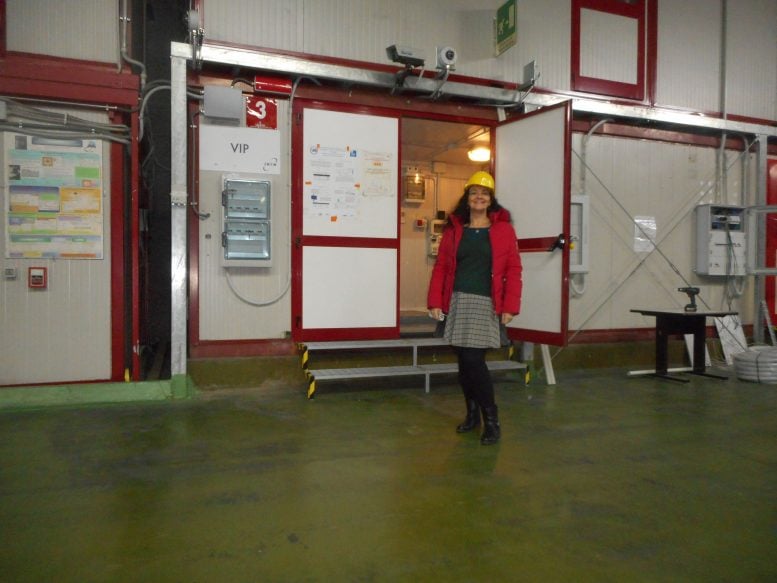

Statistical analyses of biophotons from lentil seeds provide evidence supporting theories that suggest a form of ‘intelligence’ may emerge in plants.
All living organisms emit a faint level of light radiation, known as ‘biophotons,’ though their origin and function remain largely unexplained. An international team of physicists, supported by the Foundational Questions Institute (FQxI), has introduced a novel approach to study this phenomenon, using statistical analyses of the emitted light.
Their aim is to test whether biophotons can play a role in the transport of information within and between living organisms, and whether monitoring biophotons could contribute to the development of medical techniques for the early diagnosis of various diseases.
Their analyses of the measurements of the faint glow emitted by lentil seeds support models for the emergence of a kind of plant ‘intelligence,’ in which the biophotonic emission carries information and may thus be used by plants as a means to communicate. The team reported this and reviewed the history of biophotons in an article in the journal Applied Sciences in June 2024.
Around a century ago, Russian biologist Alexander Gurwitsch realized that onions give off a weak electromagnetic field, related to cell growth. “Since then, scientists have found that bacteria, plants, animals, and even humans emit biophotons,” says Catalina Curceanu, a member of FQxI and an experimental nuclear and quantum physicist at the National Institute for Nuclear Physics (INFN), in Frascati, Italy.

“Some scientists think that these biophotons might be involved in the exchange of information, but so far no single model has been able to explain where they come from and what they are for,” adds Maurizio Benfatto, also at INFN, who led the data analyses.
Over the years, scientists have tried to monitor biophoton emission from germinating seeds as a way of measuring their quality to study the effects of pesticides and fertilizers on plants, and also as a means for checking on food quality. Experiments with tissue slices have even shown different biophoton emission rates between tumor cells and non-malignant cells. “People even release more biophotons when they are angry,” says Benfatto.
One difficulty with performing definitive experiments is that the biophoton signal is very weak and easily drowned out by surrounding lights and noise. Curceanu and her colleagues measured biophotons emanating from 76 lentil seeds in a germination chamber, housed in a darkened box, using a highly sensitive quantum photon detector.
Emerging Plant Intelligence
The team monitored the seeds over time windows that ranged from 10 to 60 hours. The pattern of emissions supports the notion that biophoton release is related to the activation of different cell groups, during the germination process. “Each unit can be thought of as a node in a network,” explains Benfatto, “and each node interacts with neighboring nodes before emitting biophotons.” This can be interpreted as the emergence of “cooperation and intelligence” he says, in that the units are sensitive to their nearest neighbors and also to units very far away. This global intelligence helps to determine whether releasing biophotons would increase or decrease global benefits for the plant.
The work was partially funded by the Foundational Questions Institute, FQxI, which aims to catalyze research into fundamental science. “Understanding this phenomenon not only sheds new light on the mechanisms used in living matter but also opens the possibility for new ideas in the treatment of human and non-human pathologies,” says Curceanu. “I am grateful that FQxI gave us the opportunity to uncover potential links between biophotons and a form of plant intelligence.”
Curceanu notes that more work is needed to uncover, for instance, where biophotons originate—possibly within mitochondria—and to confirm whether they carry information. If so, “what kind of information?” Curceanu asks. “And can we somehow change the information they carry?”
Sensitive Signals
Curceanu, Benfatto, and colleagues have also outlined economical ways in which future experiments could be improved to pick up these sensitive signals. This includes using a ‘Fresnel lens’ (a sectioned convex lens with vertical parallel planes forming concentric rings) to potentially improve the number of light photons collected by a factor of more than 10. The team also suggests housing the seeds within a white Teflon sphere, to improve light reflection. “Teflon reflects more than 99% of light, so biophotons will bounce around the sphere before eventually hitting the detector,” says Benfatto.
“We have also included other improvements in our paper which we hope will also inspire others to investigate this fascinating natural phenomenon,” says Curceanu.
Reference: “Biophotons: A Hard Problem” by Luca De Paolis, Roberto Francini, Ivan Davoli, Fabio De Matteis, Alessandro Scordo, Alberto Clozza, Maurizio Grandi, Elisabetta Pace, Catalina Curceanu, Paolo Grigolini and Maurizio Benfatto, 24 June 2024, Applied Sciences.
DOI: 10.3390/app14135496
This work was partially supported through an FQxI Fulcrum grant and through FQxI’s Consciousness in the Physical World program.